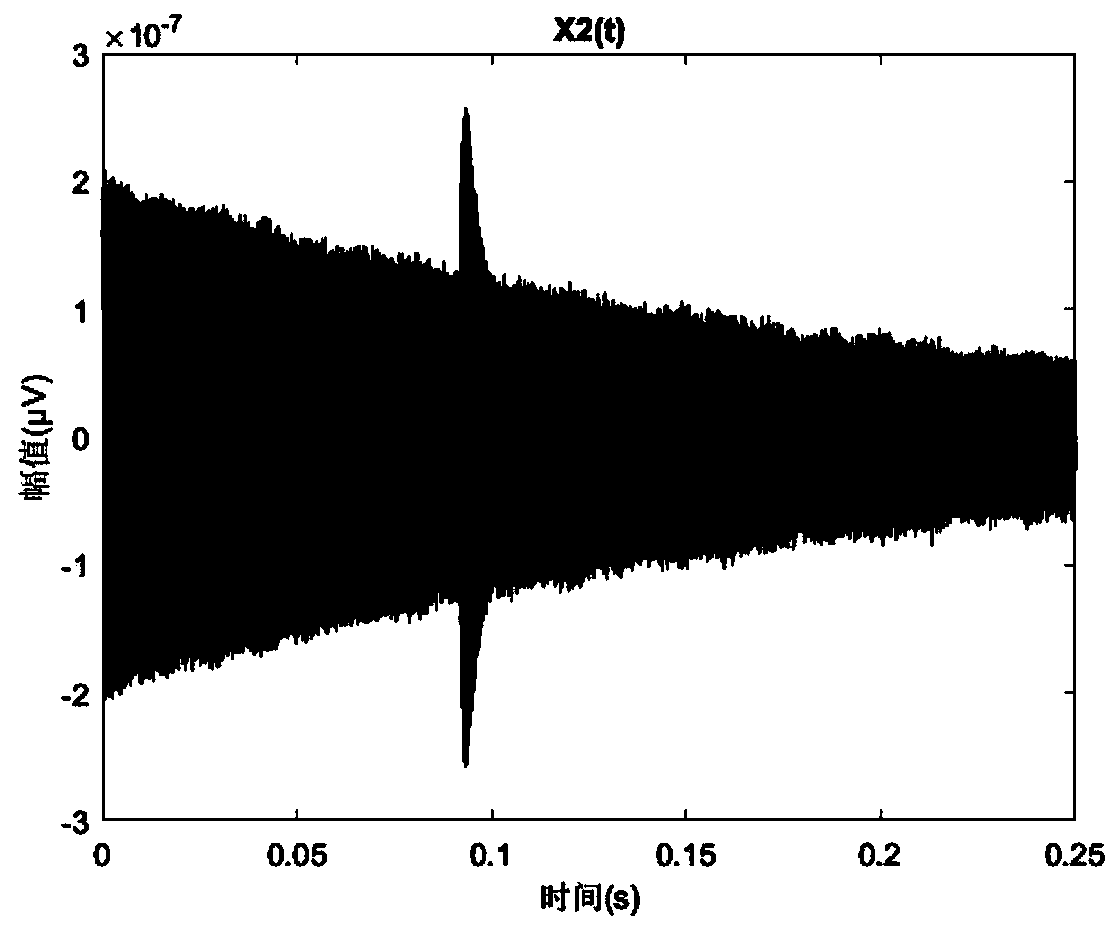A ground nuclear magnetic resonance signal peak noise removal method based on a model
A ground nuclear magnetic resonance and spike noise technology, which is applied in the fields of electronic magnetic resonance/nuclear magnetic resonance detection, biological neural network model, character and pattern recognition, etc., can solve the problem that it is difficult to extract effective ground nuclear magnetic resonance signals due to spike noise
- Summary
- Abstract
- Description
- Claims
- Application Information
AI Technical Summary
Problems solved by technology
Method used
Image
Examples
Embodiment
[0132] This embodiment is a simulation experiment of the method of the present invention carried out under the MATLAB2015b programming environment.
[0133] Step (1): Construct a simulated terrestrial NMR signal with X 1 (t) means, if figure 2 As shown, the signal can be decomposed into four parts:
[0134] x 1 (t)=NMR(t)+h(t)+sp(t)+w(t) (10)
[0135] where NMR(t) represents the pure NMR signal:
[0136]
[0137] In equation (14), Larmor frequency: f l =2326Hz, amplitude: E 0 =200nV, relaxation time: T 2 =200nV; h(t) is the power line harmonic noise:
[0138]
[0139] sp(t) represents spike noise, and the specific parameter settings are as in step (3).
[0140] w(t) represents random noise, where 5dB of random white noise is added.
[0141] Step (2): For X obtained in step (1) 1 (t) Use the harmonic modeling method to remove power frequency harmonics. The identification result of harmonic modeling is: center frequency: 50.01Hz, and X 2 (t), such as image 3 ...
PUM
 Login to View More
Login to View More Abstract
Description
Claims
Application Information
 Login to View More
Login to View More - R&D
- Intellectual Property
- Life Sciences
- Materials
- Tech Scout
- Unparalleled Data Quality
- Higher Quality Content
- 60% Fewer Hallucinations
Browse by: Latest US Patents, China's latest patents, Technical Efficacy Thesaurus, Application Domain, Technology Topic, Popular Technical Reports.
© 2025 PatSnap. All rights reserved.Legal|Privacy policy|Modern Slavery Act Transparency Statement|Sitemap|About US| Contact US: help@patsnap.com



